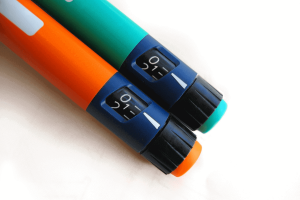What the dawn phenomenon means for your blood sugars
Ever wonder why your blood sugar is a tad higher than normal when you wake up in the morning? After all, you’ve been fasting all night. Your sugar levels should be fairly low, right? Turns out, your body is experiencing the dawn phenomenon. The kicker? It happens to everybody–not just people with diabetes.
While you’re asleep, your body is still hard at work. The dawn phenomenon is a result of what happens in your body’s systems overnight. Somewhere between 4-5 a.m., your endocrine system releases a big surge of hormones. One of these hormones is glucagon, an important chemical in your body that increases blood glucose levels. For people with type 2 diabetes, nighttime is when your body begins making less insulin and more glucagon than it needs. As a result, the glucagon takes over. Glucagon signals the liver to break down a chemicals and turn it into glucose causing your blood sugar levels to spike. People without diabetes have bodies that respond to this effect automatically. However, those with type 2 diabetes may be left with abnormally high blood sugars in the morning.
The Somogyi effect is another condition that can give people with type 2 diabetes high fasting blood sugar levels. Named for the doctor who first discovered the condition, the Somogyi effect happens when your blood sugars go high after a period of hypoglycemia, or low blood sugar. Without any source of glucose for several hours, your blood sugars may drop too low during the night. So, your body fights back by releasing hormones that raises your sugar levels.
The best way to fix these effects is to first keep tabs on your fasting blood sugars. Using a diabetes logbook to track your sugars can help you spot trends in your blood glucose levels. If you notice that your sugars are higher than normal in the morning, it’s a good idea to talk to your doctor. These are some of the options your doctor may discuss with you to help you keep your fasting blood glucose levels in check:
- Eating dinner earlier in the evening
- Exercising after dinner
- Taking extra insulin overnight
- Switching to an insulin pump




